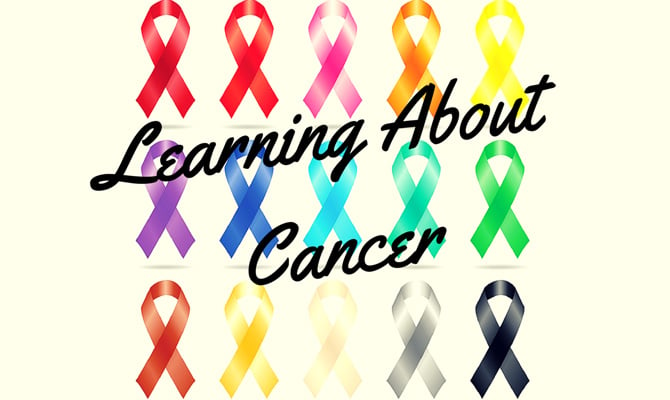Cancers of the large intestine and the rectum are among the commonest cancers worldwide as well as in Malaysia. It is reported that these cancers are among the most common cancers in Malaysia. If detected early and treated in time, it has a good prognosis. Several published studies have shown that cancers of the colon and rectum are the most common cancers among men and the third highest among women in Malaysia. Men are affected slightly more than the women. Chinese men and women have twice the incidence of these cancers as compared to the Indians and Malays (Lim GCC, Rampal S, Halimah Y. (Eds.) Cancer Incidence in Peninsular Malaysia 2003-2005. National Cancer Registry. Kuala Lumpur 2008). Risk factors: What causes colorectal cancers (CRC)? It is difficult to point to a single cause but one can identify certain risk factors, which, if present, increase the risk of developing these tumours. Age: Colorectal cancers (CRC) are diseases of the middle and old age. Nearly 95% of cancers occur after the age of 40 years. Males are more affected than females (3:2). Colonic polyps: These are abnormal growths from the inner lining of the colon and rectum. They are non-cancerous to begin with but certain types of polyps can turn cancerous. Family history: One in five patients of colorectal cancer will have a close relative with the disease. A patient with a first degree relative (parent, sibling, offspring) diagnosed with carcinoma has 2 – 3 times the risk as compared to the general population. This risk increases to 6 times if the relative was diagnosed to have the cancer at a young age. In females, previous history of breast cervical or ovarian cancer are at a higher risk. Diet: Diet plays an important role in the development of colorectal cancers. Consumption of low fibre and high fat diet has been shown to increase the risk. Smoking and alcohol: Both smoking and alcohol in moderate quantities have been shown to increase the risk of the development of CRC. Being overweight or obese makes one more susceptible while some studies have indicated that lack of exercise and a sedentary life style also increases the risk of CRC. Aspirin and Nonsteroidal Anti-inflammatory Drugs (NSAIDS): Several studies have indicated that long term use of aspirin or NSAIDS reduces the risk of CRC. However, they are not recommended for routine use for the prevention of CRC as they carry a risk of bleeding from the stomach. Symptoms: What symptoms are produced by these cancers? It depends on the location of the cancer. Fortunately, most of these cancers are located in the left side of the colon and cause alarming symptoms that prompts a patient to seek help. However, some of these cancers grow very slowly and insidiously and produce very little or non-specific symptoms till it is too late. Generally, passage of either bright red or dark red blood in stools in anyone over the age of 50 should be a cause of concern. In many patients there may be no bleeding but the patient feels that his “bowel habits” have altered. He feels that the frequency of passing stools has reduced and that the stools are harder. He may notice that he has to take laxatives in increasing quantity to pass motions. Even after passing motions, there is a feeling of incomplete evacuation of stools. The cancers that are located in the right half of the colon, the symptoms are more insidious. The only complaint that the patient may have is that of increasing weakness due to bleeding into the colon in small quantities. He may also notice that he is losing weight gradually but surely. Diagnosis: The diagnosis of CRC involves two stages. In the first stage, the growth is visualised and small samples are taken to determine the type and grade of the malignancy. To this end, x-rays called as barium enemas and endoscopic examination by a sigmoidoscope or a colonoscope are used. Barium enema and sigmoidoscopy do not need any sedation while colonoscopy may need admission and the procedure is done under sedation or in some cases anaesthesia may be needed. The second stage of diagnosis consists of determining the extent of the spread of cancer. Ultrasonography of the abdomen, CT scan are the investigations that will give information regarding the spread. Treatment: Surgery is the mainstay of CRC. A surgeon will endeavour to remove the cancer with a health margin of the colon to prevent recurrence. Continuity of the intestinal tract is restored by joining the two cut ends together, a process called “anastomosis”. Occasionally, the lumen of the intestine gets blocked due to the tumour, leading to an emergency situation. In that event, a temporary colostomy is made to relive the obstruction with definitive surgery planned later. Occasionally if the growth has involved the lower rectum or the anal canal, rectum and anal canal may have to be removed and a permanent colostomy placed. Radiation or chemotherapy may be given in addition to surgery or alone as palliation in advanced cases. Can we catch the cancer early? It is logical to think that if the CRC is detected at an early stage, the survivals are better. To detect CRC early, it is necessary to screen the population through regular periodic tests. A person over 50 years is advised to undergo these screening tests. These tests are: Faecal Occult Blood Test; Double Contrast Barium Enema; Sigmoidoscopy; Colonoscopy; CT Virtual Colonoscopy; Stool DNA Test Faecal Occult Blood Test: This test is done is done to detect small quantities of hidden (occult) blood in stools. A positive test indicates the presence of minute quantities of blood and warrants further investigations to visualise the large intestine. You have to avoid certain medications like Vitamin C, aspirin and NSAIDS, foods like citrus fruits, green leafy vegetables and red meat for at least three days before testing to avoid a false positive result. It is recommended that several samples (at least three) of stools are tested to increase the sensitivity of the test. To reduce the chances of food and medications interfering with the test, a new test for blood in stools called the immunochemical method has been introduced. This method detects human blood in stools and is unaffected by any food or medications. It is advised that this test be done at least once a year. Double Contrast Barium Enema; CT Colonoscopy: These are radiological method to visualise the large intestine. In the barium enema, the large bowel is filled with a liquid barium sulphate enema. Air is then inflated into the colon forming a contrast to the barium that has coated the walls of the colon. In expert hands, it can detect a large proportion of polyps and cancers. CT colonoscopy is a specialsed CT scan of the colon using a special software to visualise the inner lining, the mucosa of the colon. Both the above methods are attractive as they are sensitive in detecting tumours and is non-invasive. However, if an abnormality is seen, a colonoscopy is needed to sample it. Sigmoidoscopy and Colonoscopy: These investigations involve direct visualisation of the lining of the colon by an endoscope which is a flexible tube like instrument. The sigmoidoscope is a shorter version of the colonoscope, measuring less than a metre in length. The sigmoidoscope can visualise only the left side of the colon where most of the cancers occur. It is performed as an outpatient procedure and does not need anaesthesia or sedation. The bowel is usually cleared by a simple enema. The colonoscope on the other hand measures more than two metres and can visualise the entire large intestine as well as the last six inches of the small intestine. However, a patient needs to be admitted for this procedure and the bowel preparation is more extensive. It needs sedation or in some patients even general anaesthesia. It is advised that sigmoidoscopy be done once in 5 years while colonoscopy should be done once in 10 years as a screening method. Can we prevent CRC? Colorectal cancer risk can be brought down by some sensible steps that include regular screening, lifestyle change to a more active type, Eat less processed red meat and more vegetables and fruits, avoid smoking and moderate your drinking habits. Prepared By Dr Rajendra Shirahatti, Associate Professor, Department of Surgery, International Medical University

Close
- Schools & Centres
- Centre for Pre-University Studies
- School of Medicine
- School of Dentistry
- School of Pharmacy
- School of Health Sciences
- School of Alternative and Complementary Medicine
- School of Business and Technology
- School of Psychology and Social Sciences
- School of Postgraduate Studies
- Clinical Skills and Simulation Centre (CSSC)
- Centre for Lifelong Learning (ICL)
- Centre for Education (ICE)
- Programmes
- Pre-University
- Undergraduate
- Biomedical Science
- Bioveterinary Science
- Business Administration with Healthcare Management
- Chinese Medicine
- Chiropractic
- Communication with Health
- Dentistry
- Dietetics with Nutrition
- Digital Health
- Medical Biotechnology
- Medicine
- Nursing
- Nursing (ODL)
- Nutrition
- Pharmaceutical Chemistry
- Pharmacy
- Psychology
- Postgraduate
- Acupuncture
- Analytical & Pharmaceutical Chemistry
- Business Administration in Healthcare Management
- Clinical Psychology
- Counselling
- Diabetes Management & Education
- Endodontics
- Health Informatics & Analytics
- Healthcare Management (PhD)
- Health Professions Education
- Health Professions Education (PhD)
- Implant Dentistry
- Medical & Health Sciences
- Molecular Medicine
- Pharmacy Practice
- Prosthodontics
- Public Health
- Open & Distance Learning
- Executive Education
- Micro-Credential
- Short Courses
- Student Mobility
- Pre-University
- Admissions
- Campus Life
- Research
- Healthcare
- About IMU
- Careers








